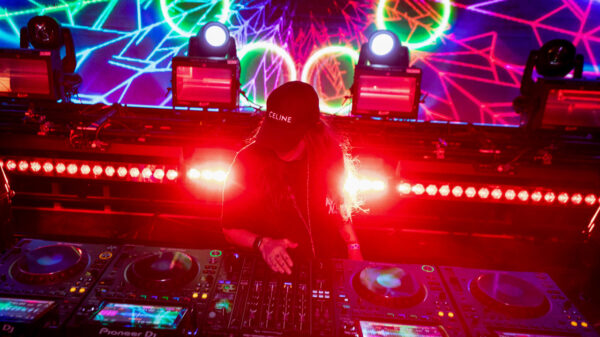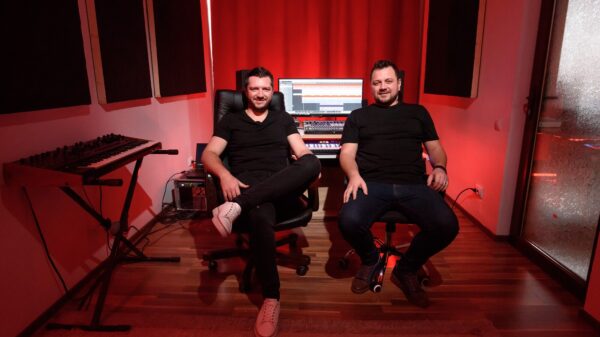Simplify Your Music Production with EDM Software
Are you tired of struggling with complicated music production software? Look no further than EDM software. EDM, or Electronic Dance Music, software is designed to simplify the music production process for beginners and professionals alike. In this blog post, we will explore what EDM software is, why you should use it, how to choose the right one for you, and common features to expect. We will also cover basic tools and functions, tips and tricks for using the software effectively, common mistakes to avoid, and troubleshooting tips. Plus, we'll take a look at emerging technologies in EDM software and what the future of EDM production holds. Say goodbye to frustration and hello to seamless music production with EDM software.
What is EDM software?
EDM software is a digital audio workstation used for creating and editing electronic dance music. It offers a range of features, including synthesizers, samplers, drum machines, and effects plugins. Ableton Live, FL Studio, and Logic Pro X are some of the most commonly used EDM software programs.
Understanding Digital Audio Workstations
Electronic Dance Music (EDM) software, or digital audio workstations (DAWs), provide producers with intuitive tools for creating dynamic beats and catchy basslines. Popular options like Ableton Live, FL Studio, and Logic Pro X offer functionality for everything from synthesis to mixing and mastering. With artists like Armin van Buuren leading the way on YouTube and streaming services, it's no wonder why EDM software is becoming more popular every day.
Types of EDM software
Electronic dance music production has come a long way with advanced EDM software. These programs offer functionality like synthesis and audio engineering that can streamline the creation of digital beats and bass. Producers can take advantage of popular software like Ableton Live, FL Studio, and Logic Pro X to create remixes that sound as professional as those by Armin van Buuren or techno. Navigation in these platforms is easy and enables easy workflow management.
Why use EDM software?
EDM software allows producers to create and edit digital music easily, using tools like Ableton Live, FL Studio, and Logic Pro X. It enables the creation of complex rhythms, beats, and melodies with precision and ease.
Choosing the right EDM software
To find the best EDM software for your music production needs, evaluate features like virtual instruments and effects processors. Consider hardware and operating system compatibility before reading reviews from other producers to make an informed decision. Price point is also a vital factor to keep in mind when selecting the right electronic dance music tool.
Factors to consider when choosing EDM software
When selecting electronic dance music (EDM) software, evaluate its functionality based on your production needs and skill level. Consider virtual instruments, digital audio synthesis capabilities, effects, ease of navigation, and compatibility with your hardware and operating system. Evaluate cost-effectiveness relative to its pricing point in the United States market. Additionally, read reviews from producers such as Armin Van Buuren and watch YouTube tutorials for progressive house or techno remixes.
Top 5 EDM software for beginners
For those looking to start producing electronic dance music (EDM), there are many options available when it comes to selecting beginner-friendly software. Popular choices include FL Studio, which boasts a user-friendly interface and affordable pricing. Ableton Live has a strong following among live performers due to its range of effects and instruments. Logic Pro X is known for its professional-grade features such as advanced mixing and mastering tools with Cubase and Reason also offering their own unique functionality to create catchy basslines or remixes of your favorite songs.
EDM software features
EDM software provides an extensive range of audio features that enable the creation of exceptional music. Along with virtual synthesizers and drum machines, it also supports MIDI connectivity, audio effects like reverb and distortion, and sample libraries. With such functionalities at hand, producers can create new sounds effortlessly. Incorporating external devices enhances this navigation experience while producing bass-driven electronic dance music.
Common features in EDM software
EDM software features typically include virtual synthesizers for creating unique sounds with options like drum machines to add rhythm and beats. Additionally, they offer a sequencer for arranging tracks along with samplers. Utilizing a range of effects like reverb and distortion enhances sound quality. Moreover, mixing and mastering tools allow for polished final products.
Advanced features in EDM software
Advanced features in EDM software enable users to create a plethora of unique sounds and textures without the need for physical instruments. Virtual instruments offer an extensive range of sound creation options, while effects plugins can manipulate audio to create innovative textures and tones. Automation tools provide control over various parameters for increased creative freedom and precision.
How to use EDM software
To effectively use EDM software, one must first become acquainted with its navigation and digital audio synthesis functionality. Next, incorporating a variety of sound effects can enhance your musical creation process within the genre of progressive house or techno. Additionally, utilizing online resources can help you advance your understanding of audio machining techniques while collaborating with fellow enthusiasts on platforms like YouTube or SoundCloud.
Basic tools and functions in EDM software
The basic tools and functions in EDM software allow for the creation of unique sounds and beats. Synthesizers enable manipulation of oscillators, filters, and envelopes; drum machines offer pre-programmed drum samples from a variety of genres. Samplers allow for the manipulation of existing sounds or samples while sequencers help arrange tracks in a specific order. These functionalities make the music production process simpler.
Tips and tricks for using EDM software
To get the most out of your EDM software, start by mastering the basics such as using synthesizers, drum machines and effects processors. Experiment with sound design techniques like layering and filtering to create unique sounds that stand out in electronic dance music (EDM). Collaborating with other producers and artists online is also a great way to gain feedback and learn new techniques.
Common mistakes when using EDM software
When using EDM software, avoid creating generic music by limiting the use of pre-made loops and samples. Thoroughly learn the software to avoid frustration and subpar results. Over-reliance on effects can muddy the mix, while neglecting proper EQ and compression techniques can result in an unbalanced sound.
Overcomplicating the production process
Simplification of the music production process is crucial to avoid frustration and burnout. Focus on the essentials and use templates or shortcuts to streamline your workflow. Avoid getting caught up in small details that won't affect the final product.
Not properly organizing files and folders
Proper organization of files and folders is essential for navigating electronic dance music software efficiently. Without a clear naming convention and sub-folders, users risk losing or misplacing important files. To avoid these issues, simplify your workflow by using templates and shortcuts while regularly cleaning up unused files.
Troubleshooting EDM software
To troubleshoot EDM software, first confirm that your computer meets all system requirements and has updated drivers. Next, check for updates and restart the software if necessary. If problems persist, reach out to customer support or online forums for additional troubleshooting tips.
Common issues in using EDM software
Troubleshooting common issues such as crashing, freezing and slow performance when using electronic dance music (EDM) software may involve updating the software, checking system requirements or adjusting settings. Checking audio drivers and ensuring proper connections can address sound quality issues. Backing up work regularly prevents data loss in case of a malfunction. Additional assistance for resolving any problem can be found through online forums or by contacting customer support.
Troubleshooting tips for EDM software
To troubleshoot EDM software, ensure that it is up-to-date and compatible with your operating system. Check for any conflicting programs or plugins that may be causing issues. Resetting your software preferences to default settings can also help. Make sure you have enough RAM and processing power for smooth functionality.
The future of EDM software
Advancements in EDM software are propelling electronic dance music to new heights. Realistic virtual instruments and plugins, cloud-based solutions for remote collaboration, AI technology integration, and improved functionality are key drivers. The future of EDM software holds even more promise, with emerging technologies such as synthesis and machining expected to take center stage in the United States' dance music scene.
Emerging technologies in EDM software
New technologies are transforming EDM production. AI-powered plugins and machine learning algorithms, virtual reality interfaces, and blockchain-based platforms offer artists more options for creating music. With these advancements, producers can experiment with new sounds, simplifying the music production process.
Predictions for the future of EDM production
The future of dance music production seems bright. The increasing use of AI and machine learning in EDM software will make music production more efficient and personalized. Improved collaboration features will allow seamless collaborations between producers worldwide. Virtual reality technology integration will create an immersive music-making experience. This will simplify the process even further and make it accessible to people who love electronic dance music (EDM).
Conclusion
In conclusion, EDM software is a powerful tool that simplifies music production. It provides users with an intuitive interface, a wide range of features, and the ability to create high-quality music. Whether you're a beginner or a professional, choosing the right software is essential for achieving your goals. Make sure you consider important factors such as compatibility, ease of use, and affordability before making your decision. By following best practices, avoiding common mistakes, and troubleshooting issues as they arise, you can make the most out of your EDM software. And with emerging technologies such as AI and machine learning revolutionizing the industry, the future of EDM production looks exciting.














